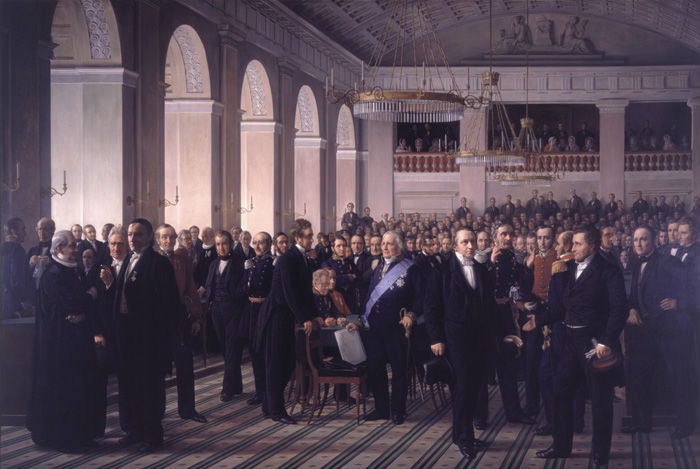The nation state: the constitution of 1849

At the beginning of the 1800s demands for political reform grew around Europe. Inspired by, for example, Norway’s constitution of 1814 and the July Revolution in Paris of 1830, a national liberal movement emerged in Denmark rooted in the middle classes of Copenhagen. The national liberals made demands for representative government guaranteed by a free constitution. The peasantry organised themselves into the Society of the Friends of Peasants, which supported the liberal demands, for instance, through the weekly publication “the Friend of the Peasantry”.
Frederik VI chose to partially give in to the demands. The laws of 28 May 1831 and 15 May 1834 introduced four Assemblies of the Estates of the Realm for respectively Holstein, Schleswig, Jutland and the Islands. The assemblies consisted of representatives from three of the four estates: the landowning aristocrats, townsmen with property and farmers possessing property over a certain size. Only 3% of the population had the right to vote in the assemblies and even fewer were eligible to stand for election to them. The representatives could debate and propose laws, but the Assemblies of the Estates of the Realm were still only advisory bodies.
Originating in Paris, a new wave of revolutions swept across Europe in 1848. Social and democratic reforms were demanded. In many places the calls for democracy became linked to national questions.
Christian VIII died on 20 January 1848. The national liberals increased the pressure on the absolute monarchy for a free constitution. At a large mass meeting in Copenhagen on 20 March the national liberal leader Orla Lehmann gained support for a number of demands, which were to be made of the new king Frederik VII. One of these was for a new government with national liberal participation. The next day the king accepted this demand. A year later on 5 June 1849 Denmark gained its first free constitution, known as “Grundloven” in Danish. With this the absolute monarchy was abolished.
More about the nation state?
Visit the exhibition Stories of Denmark at the National Museum in Copenhagen.
